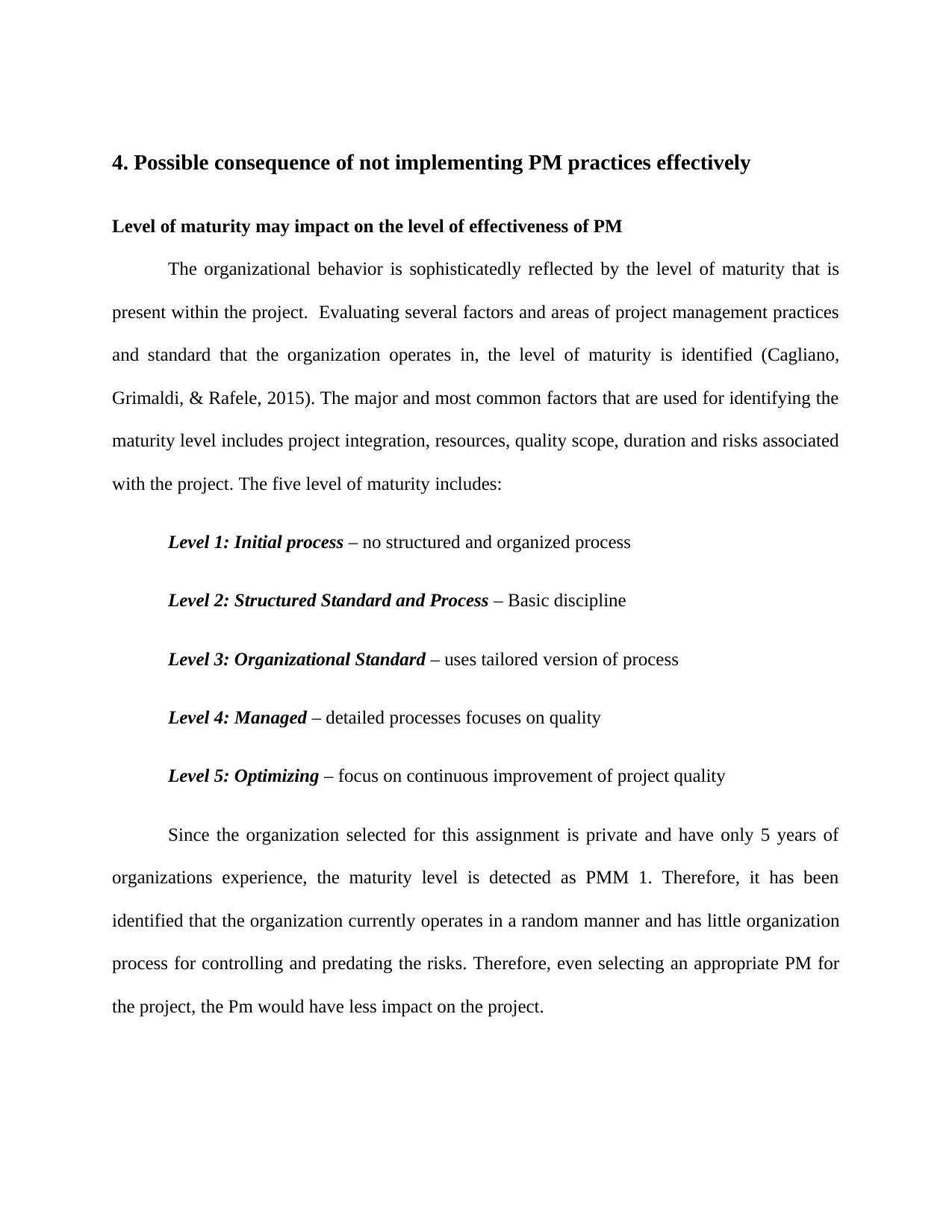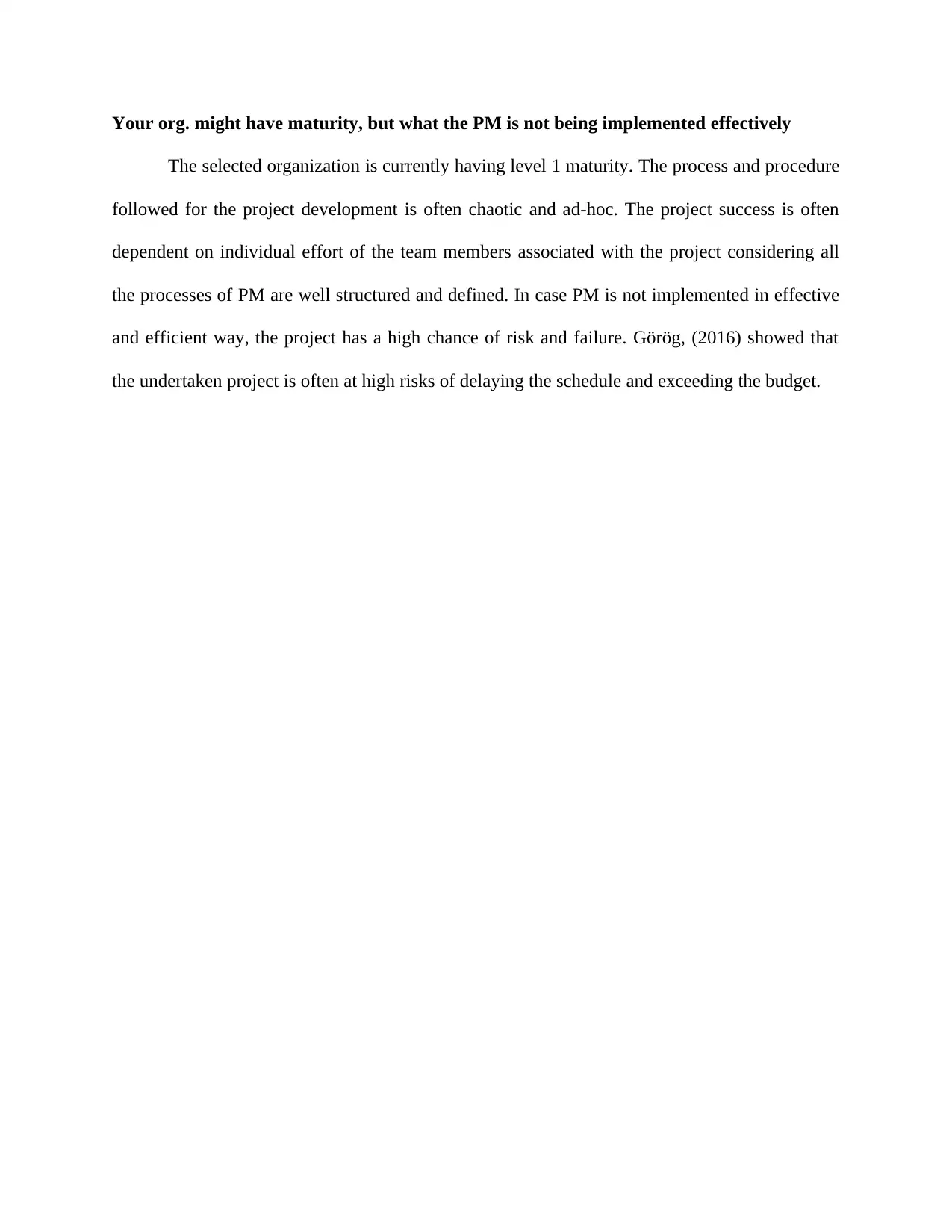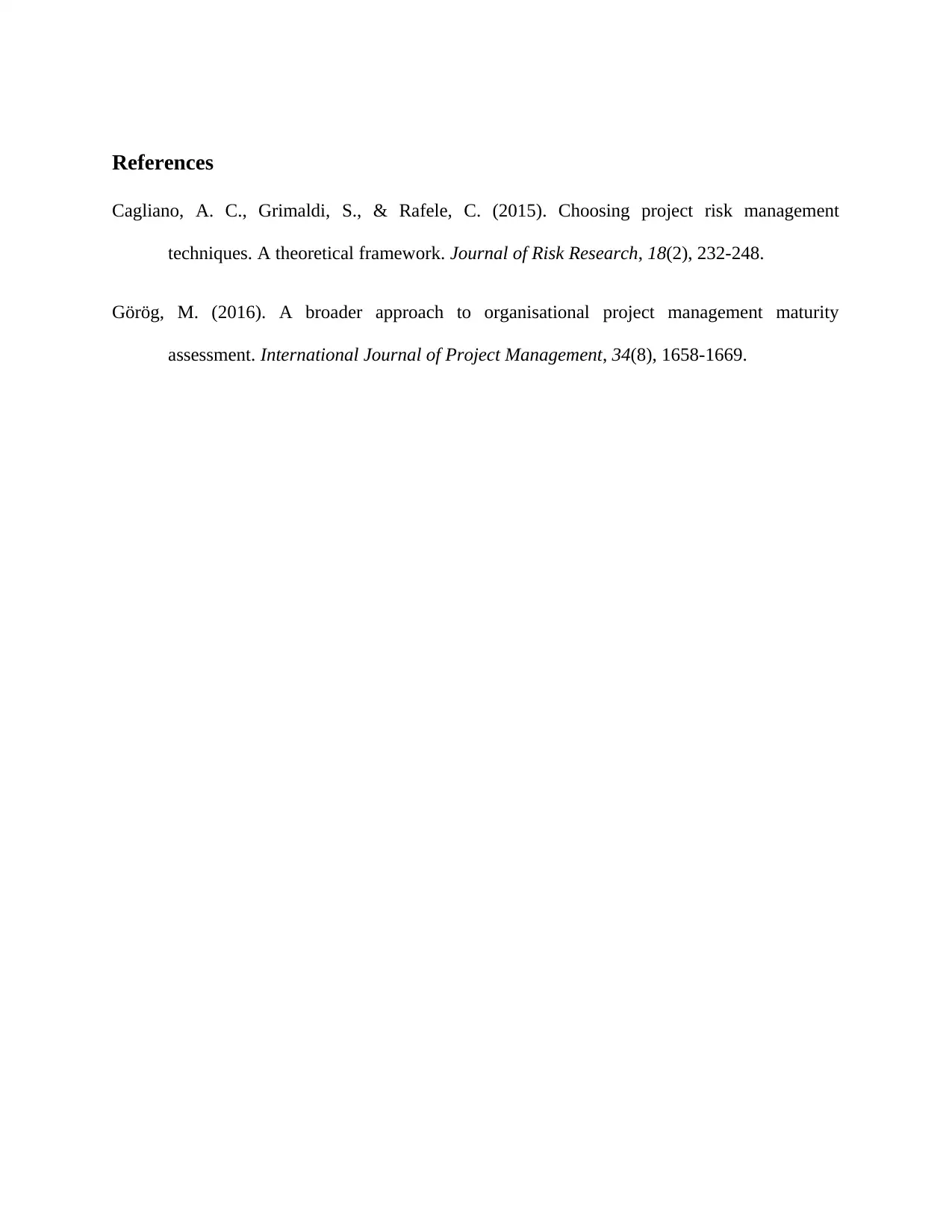Consequences of Ineffective Project Management Practices
VerifiedAdded on 2023/01/05
|4
|439
|100
Report
AI Summary
This report delves into the critical aspects of project management maturity and its impact on organizational behavior and project outcomes. It begins by defining the levels of project management maturity, ranging from initial processes to optimized systems, and assesses the maturity level of a specific organization. The report then analyzes the potential consequences of not implementing project management practices effectively, highlighting the risks of project delays, budget overruns, and overall project failure, especially within organizations with lower maturity levels. The analysis emphasizes the importance of structured processes and disciplined approaches to project management, and provides references to relevant academic research supporting the findings. The report underscores the importance of effective project management for project success. This report is available on Desklib.
1 out of 4











![[object Object]](/_next/static/media/star-bottom.7253800d.svg)